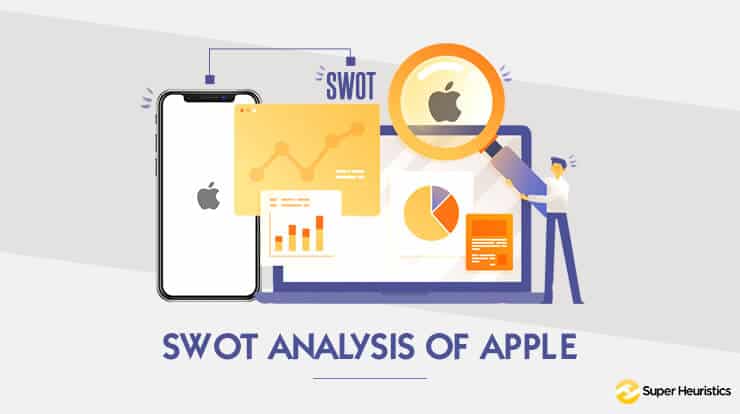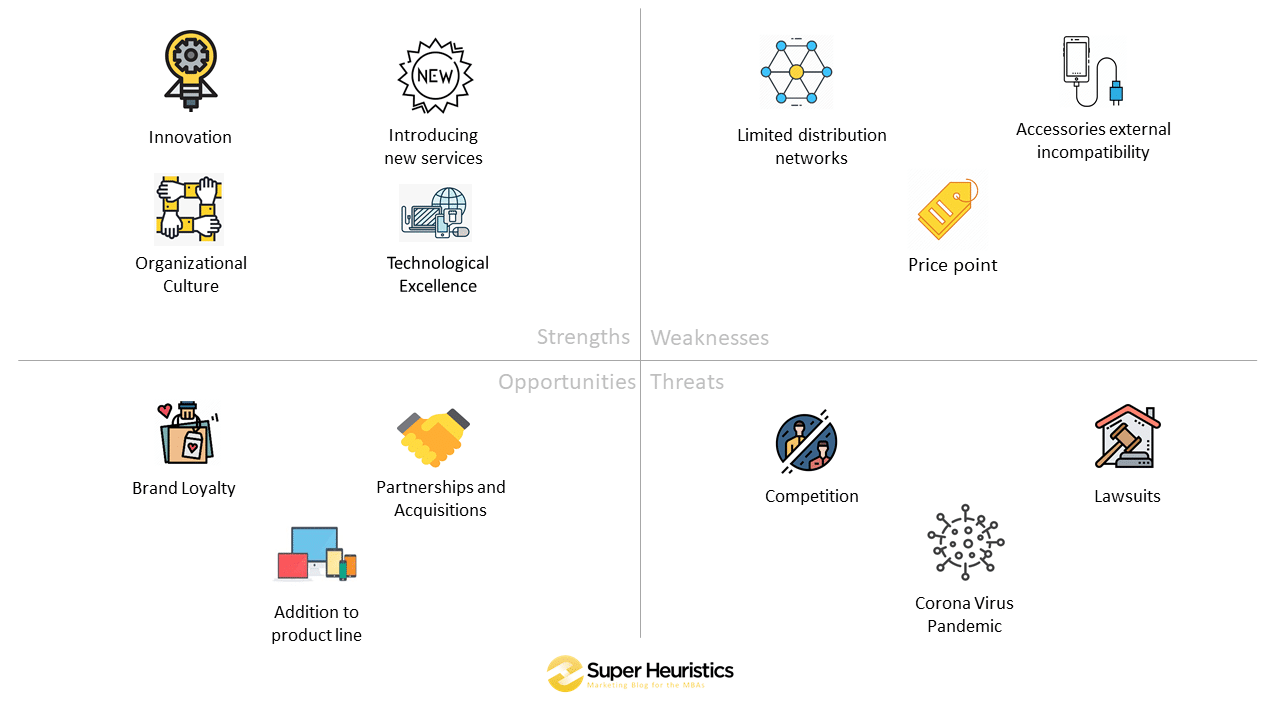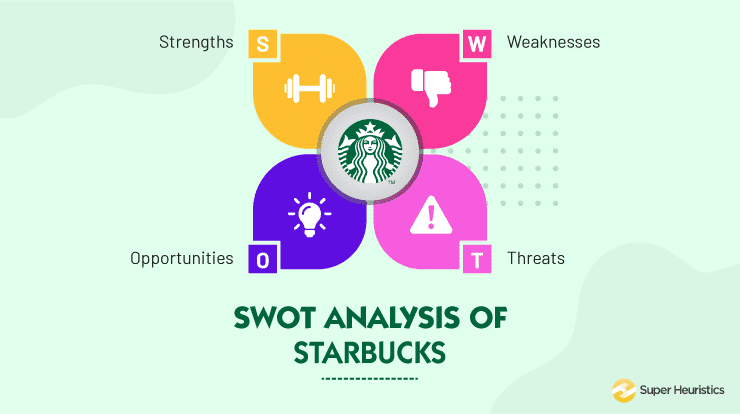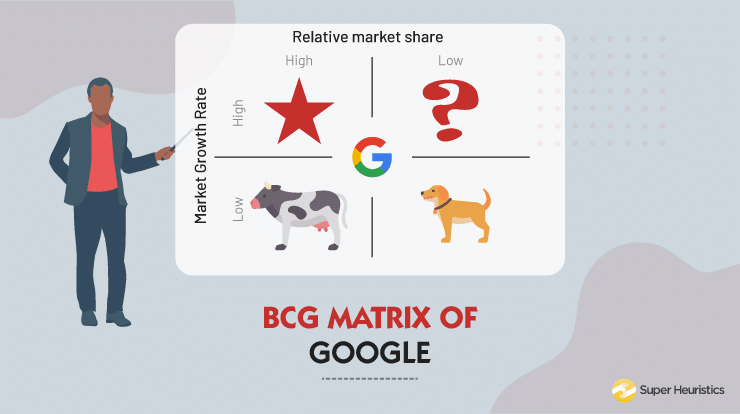
SWOT analysis has been usual on this blog. In today's article, I'll be continuing that with a SWOT analysis of Apple – but with a different touch this time around.
Take a look at my past blogs on SWOT Analysis– they're a complete SWOT analysis of the brands, Amul and Patanjali to name a few. This time around, while doing the SWOT analysis of Apple, I would also focus on what should be your thought process while doing a SWOT Analysis of a brand like Apple. I'll add ways you can work up to your analysis by defining each step thoroughly.
Let’s get started with a quick refresher on ‘SWOT Analysis’.
SWOT Analysis – What is it and Why you need it?
SWOT Analysis is a useful technique for assessing a business based on four key aspects; Strengths, Weaknesses, Opportunities, and Threats.
As a marketer, you’d be conducting experiments with many marketing strategies. However, finding the perfect strategy for your campaign relies on your understanding of the businesses.
It can help you decide what your businesses’ positive points are, and make use of those. It’ll also help you identify points which can be rectified before they become apparent threats. Simply put – It’ll help you create strategic plans that distinguish and outsmart you from your competitors.
How should you be doing that? That’s precisely where our SWOT Analysis of Apple Inc. comes in. But before we even start on the SWOT analysis of Apple itself, there’s an important task that is obvious, but it comes before you do a SWOT analysis.
It is ‘context’. That means, research the brand or business you’re going to analyze – what is it, who owns it, revenues, history, etc. Therefore, here is some context on Apple Inc. for you.

Marketing Concepts Mastery Course
Learn the essential marketing concepts. Create the best outcomes from MBA without depending on placements!
Understand BCG Matrix, SWOT Analysis, Ansoff Matrix and many other important marketing frameworks just like an expert MBA professional would. Solidify your concepts by building a personal brand in marketing.
The World’s Most Valuable Brand – Apple Inc.
Apple Inc. is a multinational company, established in 1977, and is the world's largest technology company, crossing 111.4 billion revenue in Q1 2021, with 1 billion active Iphone users. It’s also one of the most highly reputed brands in the world, especially in terms of market capitalization and brand value.
It was founded by Steve Jobs, one of the pioneers of modern technology, along with others and is now headed by Tim Cook. Under their leadership, the company has introduced dozens of new products and continued to trample over the market.
Since its inception, Apple has been at the forefront of evolving technology, computer hardware, and smartphones. The company's most acclaimed product, is its smartphone, iPhone, which runs on Apple's own operating system, iOS. It accounts for a total of 54% of the company's total revenues., although it’s revenues from Iphone for third quarter of fiscal year 2020 reduced to 44%, the lowest in so many years.
You can check in it: Statista
Apart from the iPhone, Apple’s products also include their Mac laptops, iPad, wearable, home accessories, digital streaming solutions, and several other products. Listed in the order of revenue generation for the company.
The key takeaway from this is to research the brand you’re going to analyze. Just a thorough pre-analysis research of the market, industry, and the brand itself can help you get an edge. Market research is also an excellent addition to this research.
SWOT Analysis of Apple
Let’s jump into our SWOT analysis of Apple Inc. Let’s go over each of the four aspects: Strengths, Weaknesses, Opportunities, and Threats.

Strengths of Apple
A company’s strengths rely on its internal assets. The performance of the people, processes, and technology that sums it up will help you decide what strengths it possesses.
Here’s a non-exclusive list of areas you might want to have a look at to gather the strengths of a business:
- Tangible and intangible assets
- Intellectual property
- Company workflow, culture, and outlook
- Financial standing
- Company position/ Brand Name
It doesn’t have to be definitive from the get-go but the more specific it is, the better (you can add in a re-prioritization step at the end).
Here’s a list of the most prominent strengths in our SWOT Analysis of Apple Inc.:
1. Innovative Products, Unique Designs
Apple's ability to design their own hardware, software and other products helps it rank among the ones at the top of the ladder.
Each year, their new products add on to the predecessor and improvise on the design, usability, and easiness of the product. It's one of the reasons why their brand still manages to capture the market despite high prices.
For example, In 2021, Apple is planning to launch Airpods 3, updating the previous model, accommodating more customer friendly features and improving the model to reduce costs.
Also Read: GE Matrix for Product Portfolio analysis
2. Introduction of New Services
Owing to the advent of several new technologies in terms of digital streaming and payments, Apple has been successful in launching their own systems. Apple TV+, Apple Music, iTunes, and Apple Card, and Apple Arcade are among the new services to be launched and improved.
Recently Apple launched Apple One, the easiest way to get all of Apple’s subscription services in one Simple plan, Apple therefore, keeps improving its service facilities as well, retaining and attracting new customers.
Only the services portfolio of Apple accounts for 17. 7% of Apple’s annual revenue. To be able to constantly innovate your product portfolio is a strength. Companies often mistake little movements for innovation, but innovation is seldom incremental innovation. Innovation is a much larger pivot.
3. Organizational Culture
Apple’s ability to deliver high-quality products and stand atop the innovation ladder is solely possible because of its culture. Striving for innovation, change, creativity as a whole and imposing this mindset has helped them uncover brilliant ideas and develop a strong internal brand culture. These two factors – creativity and excellence – can drive business development and lead to further growth.
The best insight of what the culture is when it comes to customer obsession would be this scene from the movie Jobs. This dramatization of Steve Jobs’ life does capture the essence of customer success and design success mentality at Apple.
4. Technological Excellence
Compromise in quality is what disrupts a businesses' market share. Apple's been working on top-notch technology and developing products with a focus on quality, and that's what boosts their brand loyalty.
This innovation, quality, and simplicity help them outclass others with an 87% brand loyalty across the US and European countries alone.
Brands often mistake that technological advancement and technological excellence is about using complex technology and do complex things with it.
Watch video: Steve Jobs announcing the first iPhone in 2007
Apple brings to you a great example of how technology is supposed to be used to simplify things. There’s a obviously a reason why an iPhone or an iPad’s operating system is considered to be extremely user friendly among the users.
5.Global reach /Brand of Choice:
Apple is one of the most reliable and trusted company and has established a brand name for itself. It is a globally known brand, selling products across 25 countries.
It is not a big news that Apple is a demanded brand in corporate offices, it provides top class customized technology solutions for every corporate need, making it the most prominent brand of choice.
Weaknesses of Apple
A business' weak points are mostly internal to the company. Start by assessing your business from a more vulnerable standpoint where you’re at a disadvantage against your competitors. Is it the lack of innovation in products, declining market share, or demand? These weaknesses can also help you map your progress over time.
1. Limited Distribution Network
Apple Inc. has a limited distribution network because it sells its products by itself, and few stores are scattered all around the world. Unlike other smartphones products you can easily get by just walking into a phone store, it's very rare to get Apple products like that.
It also adds on to the burden of getting after sale services, as only apple stores can trust worthily provide services of their products.
Most people who buy, do so directly from their website. The major disadvantage of this is that it limits market reach.
2. Lack of Compatibility (Accessories Incompatibility)
When a customer buys an Apple product, they enter into the Apple Universe.
Apple's products are notorious for being compatible with Apple's accessories. Lack of ports, unique charger cables, and missing jack ports – although these serve to be innovative designs, these also increase the cost of add-ons.
The fact that third-party items or software don't work is a primary reason they're incapable of targeting an audience which wishes for these features.
3. Price Point
Apple's premium pricing is a significant concern for many. The high-profit margin has been the reason the product has only managed to target an elite class of people despite their audience being general smartphone uses. In India, especially, people are more inclined to shift to less economical options like Samsung.
4. Unfair Business Practices
Apple has been accused of using tracking apps in its phone, which revealed the precise location of users. Apple is under investigation for unfair business practices as well
Opportunities for Apple
Opportunities are the real deal for business – these are the points which can make a difference for the company and be turned into useful strengths. After SWOT analysis, identified opportunities should be implemented to yield maximum benefit. Here's my list of possibilities in our SWOT analysis for Apple.
1. Brand Loyalty
Apple has created a premium image in the mind of the customers associated with style, status, and customization boosting its sales.
Apple’s product announcements and unveiling events spread like wildfire. But that isn’t the only thing – Apple’s iPhone also features a remarkable customer retention rate of 92%.. This only begins to show what else can they achieve in terms of market capture. Apple has the advantage to boost this percentage by keeping their loyalists happy, and bringing more innovative ideas to life.
2. Addition to Product Line
Apple’s small lineup of products only help it capture a specific portion of the smartphone market. They should add more products and services to their portfolio which can help them compete against other technology leaders. For example, Apple Pay has been a good addition alongside Google Pay or other payment options now available worldwide.
3. Partnerships and Acquisitions
Apple has the opportunity to acquire startups and companies with investments in AI, Machine Learning, and technology. Such acquisitions can allow Apple to incorporate this tech into their products and further enhance its quality. As an example, Apple did manage to acquire a company Regaind, which helped Apple in adding ML to its native smartphone applications.
4. Technology
Apple has the opportunity to continue to grow beyond just Apple watch and airpods into other wearable categories.
Upcoming technology along with Artificial Intelligence will enable apple to increase it’s profit margin and have a strong market position, the company has also extended it’s AI portfolio.
Threats to Apple
Threats are external to the business under consideration. Although continuing to work on the strengths should be enough to mitigate these threats, they're often dangerous. Identification of the dangers and calculating their risk can help the business prepare for the threats' outcomes.
Here’s a list of the threats identified for our SWOT analysis for Apple Inc.
1. Market Capture by Competitors
The entire ecosystem for smartphones and the industry is changing, and it's opening up the opportunities for competitors to penetrate the market. Just a comparison of the market share between Android and iOS smartphones suggests it's about 74.13% to 24. 79% share, respectively.
This could also be due to several brands working on the open-source Android smartphone development.
2. Coronavirus Outbreak and Global Tensions
Most companies rely on their manufacturing and supply chain setup in China. Unfortunately, the outbreak of the novel virus has managed to damage up to 20% of Apple's annual revenues until April 2020, specially in countries like China, Italy, South Korea, and The United States. The revenue was expected to be between $63bn - $67bn, but it was only able to $57bn, which is a 15-20% drop from what was predicted)
Apple’s supply chain was also affected by the same, and Apple reported a flat revenue in the year 2020 due to supply chain uncertainties pertaining to the corona virus outbreak
Also see: COVID-19 Coronavirus: Impact on Apple's iPhone, Mac and WWDC
Secondly, the increase of tariff on imports from China can lead to higher pricing for the products. This, in turn, adversely affects the gross margins and more pricey for the customers. Considering the first threat, a combination is a damaging blow.
3. Lawsuits
Apple is actively dealing with hundreds of lawsuits. Consumers mainly open these in regards to their phones being slowed down and the CPU rates being throttled. According to recent news, Apple is to pay $18M to settle a lawsuit for slowing or disabling FaceTime on older iPhone models.
4. Increasing Competition and Market Share
Although Apple has established itself as a solid brand, It faces competition from brands like, Samsung, Dell, etc., We can see the difference through the number of android users as compared to Apple users.

Case Analysis Blueprint Course
Use marketing frameworks like these to solve business case studies with ease
Frameworks like the SWOT analysis are extremely crucial to analyze the most complex case studies. Get to know how to analyze a marketing case study comprehensively in just 5 slides. Which means that the next time you need to analyze a case, you know exactly how to ace the case
Conclusion
That's it for our article on the SWOT analysis of Apple. I have gone over each of the four aspects of SWOT: Strengths, Weaknesses, Opportunities, and Threats. The process starts with thorough research of the business under consideration.
Here we saw what made Apple such a big brand! The strengths of Apple like innovating products, technological excellence, weaknesses like, distribution network and high prices (premium product). Along with that opportunities like, Brand loyalty, addition to product line and finally the threats, like, Corona Virus outbreak, lawsuits, etc.
Next, you can quickly gather data about the current situation of the company. Start populating the table for the four aspects, and you'll have your SWOT analysis-ready.







Where is the reference for this article please?